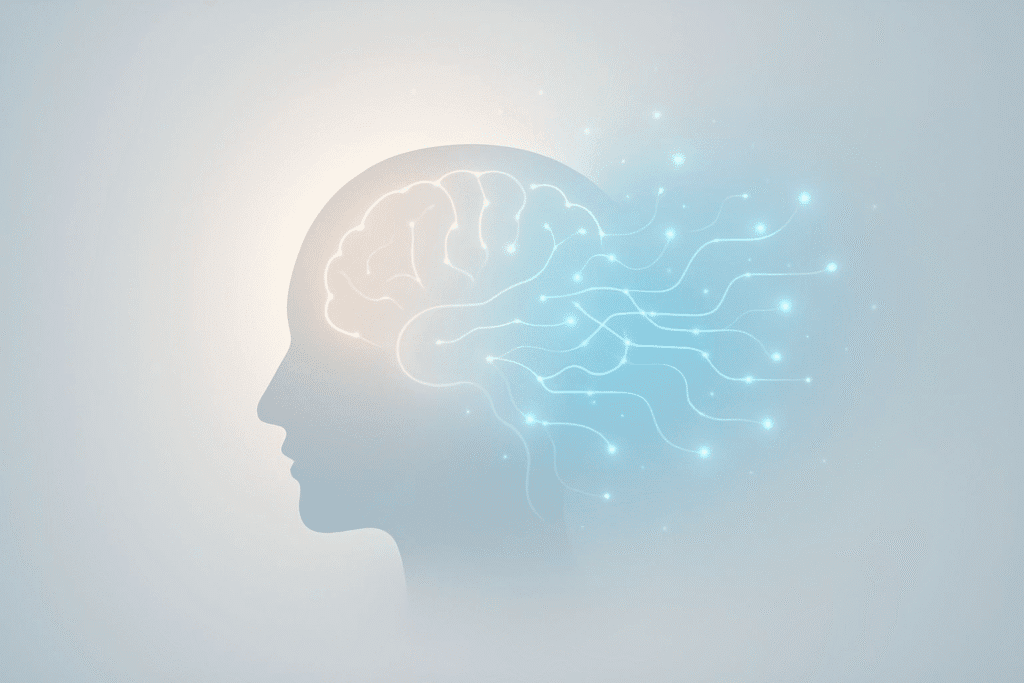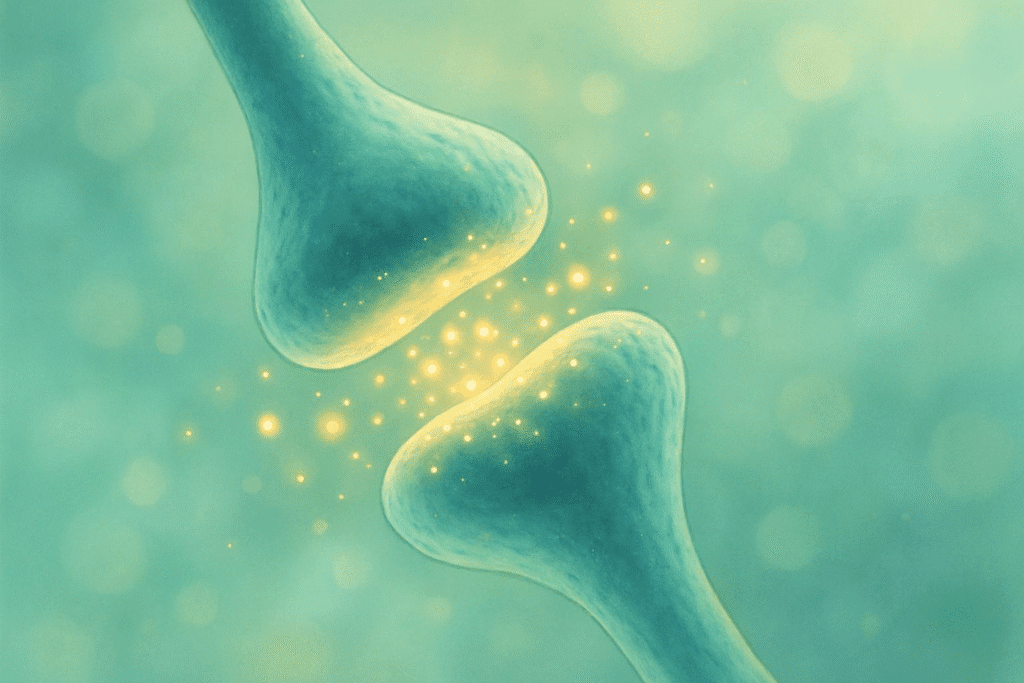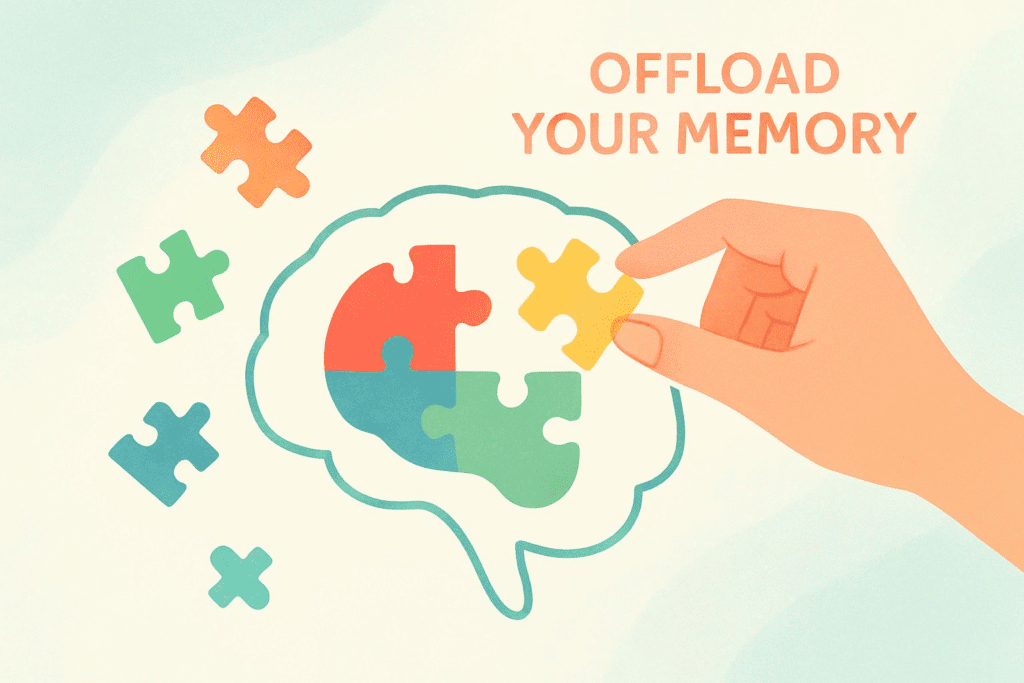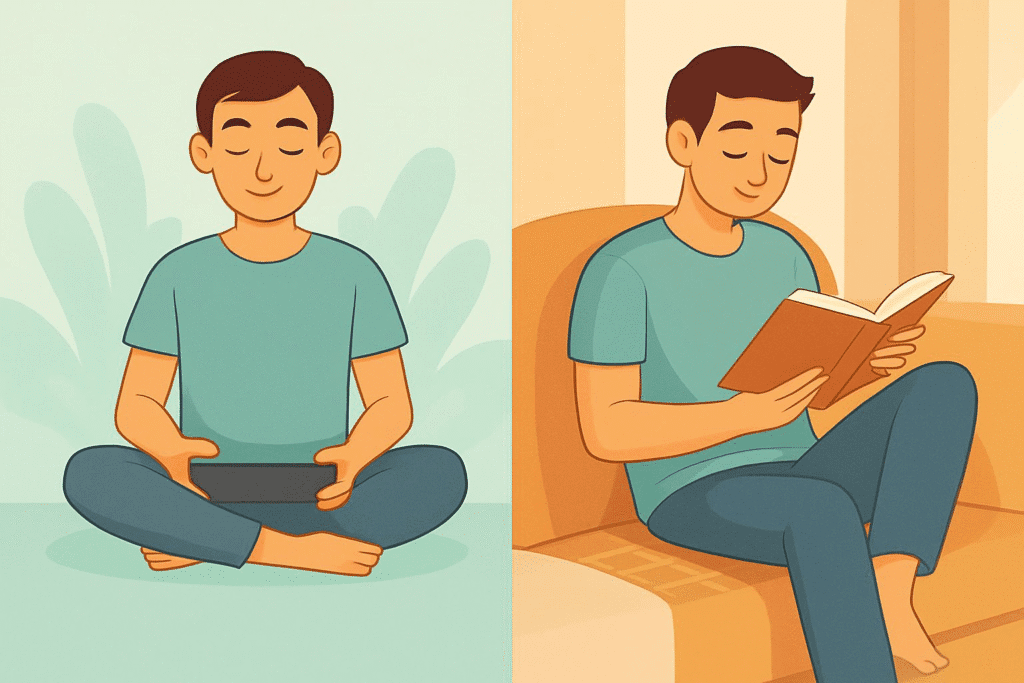Introduction

Artificial intelligence isn’t just changing the tools we use — it’s quietly reshaping the very way we think.
Every day, from the instant we unlock our phones in the morning, AI-driven systems start working behind the scenes. These invisible forces steer our attention, mold our memory patterns, and subtly rewire our decision-making processes. What’s alarming is that this shift is so seamless, most of us remain blind to it.
But make no mistake: there’s a cognitive revolution underway. The endless scroll of social media, personalized recommendations, and algorithm-fed news aren’t just conveniences — they’re altering the architecture of human thought. We’re being conditioned to crave instant rewards, hand over our problem-solving to machines, and lose the ability to sit with complex ideas for more than a few moments.
Here’s the uncomfortable truth: AI isn’t simply adapting to us — it’s training us. The question is no longer whether AI makes life easier. The question is whether we’re becoming puppets of our own creations.
In this blog, we’ll pull back the curtain. You’ll discover the neuroscience of how AI reshapes your brain, the hidden psychological traps you’ve fallen into without realizing it, and — most critically — how you can fight back. Because in the age of AI, mental sovereignty might be your most valuable asset.
The Science Behind How AI is Quietly Rewiring Your Brain

Artificial intelligence isn’t just influencing what you choose — it’s reshaping the very structure of your mind. Every interaction with AI subtly strengthens certain neural connections while weakening others. The result? A gradual but powerful transformation in how we think, focus, and remember.
Neuroplasticity and AI: When Convenience Rewires the Brain
Our brains are built to adapt. This natural ability, known as neuroplasticity, allows us to form new habits, learn new skills, and recover from setbacks. But in the age of AI, this same flexibility can work against us.
AI tools — from predictive text to algorithmic recommendations — train the brain to expect speed, ease, and instant solutions. As these quick-reward circuits strengthen, the pathways responsible for patience, deep thinking, and problem-solving start to weaken.
Recent brain imaging studies reveal that frequent interaction with AI-driven platforms alters neural activity in regions tied to focus and self-control, making sustained attention harder over time.
The Dopamine Trap: How AI Trains You to Crave Instant Gratification
Many AI-powered apps are designed to keep you coming back for more. Likes, notifications, and recommendations create small bursts of dopamine — the brain’s reward chemical — encouraging repetitive, often mindless engagement.
The problem? This constant cycle conditions the brain to seek easy wins. Over time, it erodes the capacity for deep concentration, patience, and complex problem-solving. People start to struggle with boredom — a state that once gave rise to creativity and reflection.
Research increasingly links excessive dopamine-driven digital behaviors with reduced gray matter in brain areas that support impulse control and decision-making.
Fragmented Attention: Why AI Makes Focus a Struggle
AI systems are built for engagement, not depth. Content is optimized to grab attention quickly, often pulling you from one distraction to the next.
As the brain adapts to consuming information in fast, bite-sized chunks, long-form reading and deep work become more challenging. Studies show that people who frequently multitask with AI tools score lower on tests of working memory and have a harder time filtering out irrelevant information.
This shift not only weakens focus but also makes it difficult to engage with complex ideas for extended periods.
Memory Offloading: The Hidden Cost of Relying on AI
Where once we memorized facts, directions, or phone numbers, now we simply search. This habit, often called the Google Effect, trains the brain to store less information internally because it knows retrieval is just a click away.
While this frees up mental space, it also weakens the brain’s ability to form strong memories. Over time, reliance on external memory sources can dull creativity, slow problem-solving, and leave the mind less prepared to handle unfamiliar challenges.
The Hidden Psychological Effects of AI: How Artificial Intelligence Is Quietly Reshaping the Human Mind

Artificial intelligence has moved beyond simply automating tasks or recommending movies. Today, AI is subtly reshaping how we think, feel, and engage with the world around us. Its influence is often invisible, but the consequences touch nearly every aspect of our mental life — from the decisions we make to the emotions we experience, and even how we see ourselves and others.
Let’s explore the overlooked psychological impacts of AI — and why understanding them is essential if we want to protect our cognitive independence in an AI-driven world.
Decision-Making: When AI Nudges Our Choices Without Us Realizing
AI systems have become skilled at anticipating what we might want next — whether it’s a product to buy, a news story to read, or a video to watch. But these helpful recommendations come at a hidden cost.
- The illusion of free choice: Every time we click on a suggestion tailored “just for us,” we feel as if we’re making an independent decision. But in reality, AI algorithms have already narrowed the field, guiding us toward certain options while keeping others invisible.
- Reinforced biases: As algorithms learn what we like, they increasingly serve content that aligns with our existing preferences. This reduces our exposure to alternative ideas, making it harder to broaden our perspectives.
- Diminished critical thinking: Over time, constant reliance on AI-driven suggestions can dull our ability to evaluate choices on our own. The brain grows accustomed to outsourcing decisions, weakening the mental muscles we need for independent judgment.
Emotional Manipulation: How AI-Driven Content Shapes Our Moods
Many AI systems are designed to maximize engagement, and one of the most effective ways to do that is by tapping directly into our emotions.
- Engineered emotional highs and lows: Social media feeds, news apps, and entertainment platforms use AI to deliver content that keeps us hooked — whether by sparking outrage, joy, fear, or validation. This can create addictive cycles of dopamine-driven engagement.
- Mental health strain: The constant barrage of emotionally charged content can fuel anxiety, anger, or insecurity, subtly eroding emotional well-being over time.
- Blurring human and artificial connection: As AI-powered chatbots and virtual assistants become more sophisticated, people sometimes form emotional attachments to these digital entities, complicating our understanding of relationships and connection.
Social Conditioning: How AI Shapes What We Believe
AI doesn’t just influence what we consume — it affects how we see the world.
- Creation of echo chambers: By continuously serving content that matches our views, AI limits intellectual diversity and reinforces existing beliefs.
- Erosion of curiosity: When we’re surrounded by information that always confirms our opinions, we lose the drive to explore opposing ideas or question our assumptions.
- Subtle opinion shaping: AI-powered personalization can quietly steer public attitudes — influencing everything from what we buy to where we stand on political and social issues.
The Creativity Crisis: How AI Disrupts Deep Thought
The brain’s default mode network (DMN) is the part that lights up during moments of introspection, imagination, and original thinking. But AI-fueled distractions are pulling us further from this essential mental state.
- Less time for reflection: Constant notifications, algorithmic recommendations, and on-demand content keep our minds externally focused, leaving little room for deep thought.
- Weakened problem-solving: As we grow dependent on AI for answers and ideas, we may lose the ability to generate creative solutions on our own.
- The decline of inner dialogue: Our need for constant external input reduces opportunities for meaningful self-reflection — a critical ingredient for personal growth.
Reclaiming Our Minds in an AI World
AI isn’t just changing what we think — it’s reshaping how we think. Recognizing these subtle psychological effects is the first step toward regaining cognitive freedom. By becoming aware of AI’s hidden influence, we can make more mindful choices, strengthen our critical thinking, and preserve our capacity for genuine creativity in a world increasingly shaped by algorithms.
The Digital Addiction Cycle: How AI Keeps Us Clicking, Scrolling, and Hooked

Artificial intelligence today doesn’t just assist us — it captures our attention and keeps it. The design of most modern digital platforms revolves around maximizing user engagement, often at the expense of well-being. This creates a subtle but powerful addiction cycle that is hard to break. To reclaim control over our time and minds, we need to understand how AI fuels this cycle.
AI and Screen Dependency: The Science of Staying Glued to the Screen
Behind every swipe, scroll, and tap is an AI system fine-tuned to keep us engaged for as long as possible.
- Designed for engagement, not balance: Most digital platforms aren’t optimized for mental health. Their goal is to capture attention — using predictive algorithms that learn what keeps each user hooked.
- Endless content loops: Features like infinite scroll, autoplay, and personalized recommendations aren’t accidental; they’re engineered to encourage compulsive consumption, making it easy to lose track of time.
- Brain chemistry on tech: Studies have shown that prolonged screen exposure alters dopamine pathways in the brain, making it increasingly difficult to unplug and resist the pull of digital devices.
The Efficiency Trap: When AI-Driven Productivity Fuels Burnout
AI promises to make us faster, smarter, and more efficient — but this promise can come with hidden costs.
- More tools, more stress: While AI-powered apps help streamline tasks, they often raise expectations, leading to a constant pressure to do more in less time.
- Always-on culture: Notifications, task managers, and AI-driven work platforms create an environment where disconnecting feels impossible. This “always available” mindset contributes to mental fatigue.
- Blurred boundaries: The line between being productive and being overworked becomes hard to see, as AI-driven workflows push us to chase endless optimization, often at the expense of our well-being.
AI and Sleep: The Price of Constant Digital Stimulation
One of the most overlooked effects of AI-fueled technology is its impact on sleep and neurological health.
- Interrupted rest cycles: The glow of screens, combined with AI-timed notifications, keeps the brain alert when it should be winding down. Blue light exposure interferes with melatonin production, making restful sleep harder to achieve.
- From stimulation to insomnia: The constant flood of digital input makes it difficult for the mind to shift gears from alertness to relaxation, leaving many users caught in patterns of poor sleep.
- A weakened mind: Sleep deprivation doesn’t just make us tired — it impairs memory, reduces focus, and makes emotional regulation more difficult. In turn, this increases reliance on digital distractions, feeding the addiction loop.
The Social Media Brain: How AI Reshapes Connection and Empathy
AI-driven platforms don’t just change how we interact with technology — they alter how we engage with each other.
- Chasing validation: Social media algorithms reward posts that attract likes, comments, and shares. This creates a feedback loop where instant digital validation becomes more gratifying than real-world interactions.
- Compulsive engagement patterns: The dopamine hit from a like or notification encourages frequent checking and scrolling, creating habits that are hard to break.
- Shifting social norms: Over time, the way we communicate, empathize, and measure our self-worth can become shaped by the metrics and incentives set by AI systems, subtly changing what we value in relationships and ourselves.
Breaking Free: The First Step Toward Digital Autonomy
AI doesn’t just serve content — it architects our behavior. By understanding the hidden mechanisms behind digital addiction, we can start to make more conscious choices, set healthier boundaries, and reclaim control over our attention and well-being.
How to Reclaim Your Brain from AI’s Invisible Grip

Artificial intelligence may be reshaping how we think, choose, and interact — but it doesn’t have to define us. While AI systems are designed to guide our attention and influence behavior, we still hold the power to take back control. By adopting intentional habits, we can break free from algorithmic manipulation, restore independent thinking, and protect the integrity of our minds in the digital age.
Digital Detox: Simple Practices to Give Your Mind Breathing Room
In a world flooded with algorithm-driven content, creating space for your own thoughts is essential.
- Set boundaries on AI-heavy apps: Identify the platforms that rely most heavily on algorithms — such as social media feeds, streaming services, and shopping apps — and limit their use to specific times of day.
- Embrace moments of boredom: Instead of filling every quiet moment with digital input, let your mind wander. Research shows that unstructured thought boosts imagination, problem-solving, and emotional processing.
- Go analog: Rediscover the satisfaction of offline activities. Reading a printed book, writing in a notebook, or taking a walk without devices helps reset neural pathways overstimulated by screens.
Mindfulness in the Age of AI: How Awareness Weakens Manipulation
One of AI’s greatest strengths is its ability to exploit unconscious patterns — but awareness can break the spell.
- Pause before you click: Algorithms thrive on snap decisions. Training yourself to slow down and reflect before engaging helps disrupt the cycle of impulsive interaction.
- Challenge digital nudges: When an app recommends content or products, ask: Am I truly choosing this, or am I being steered? This small mental check restores agency.
- Diversify your digital inputs: Step outside AI-curated bubbles. Actively seek out information and viewpoints from sources that aren’t tailored by algorithms. This keeps your mind open and curious.
Strengthening Cognitive Resilience: Rebuild Focus, Memory, and Original Thought
To counter AI’s influence, we need to retrain the brain’s core cognitive abilities.
- Deep work blocks: Set aside periods for undistracted focus — no notifications, no multitasking. Even short daily sessions can dramatically improve attention span and productivity.
- Memory without machines: Practice recalling information — a phone number, a fact, or a list — without reaching for search engines. Strengthening natural memory sharpens mental agility.
- Exercise critical thinking: Regularly engage in conversations, debates, or puzzles that require you to reason without AI shortcuts. This helps rebuild independent problem-solving skills.
AI as Assistant, Not Overlord: Redefining Your Relationship with Technology
AI can be a powerful tool — as long as we use it intentionally.
- Set conscious boundaries: Use AI for tasks where it enhances efficiency (like organizing data or automating reminders), but don’t let it replace human judgment or creativity.
- Curate your digital spaces: Choose apps and platforms that respect your cognitive health — those that encourage reflection, learning, or genuine connection over mindless consumption.
- Prioritize human connection: In an AI-saturated world, face-to-face interaction, empathy, and real-world community are more important than ever for mental and emotional well-being.
The Future of Your Mind Is in Your Hands
AI is designed to capture attention — but attention is only powerful when we choose where to place it. By adopting mindful digital habits and rebuilding mental strength, we can ensure that technology serves us, not the other way around. The challenge of this century is clear: to protect the independence of human thought in a world increasingly shaped by algorithms.
Timeline: How AI Has Quietly Rewired the Human Mind
This timeline maps out the key moments where artificial intelligence began shaping — and in some cases, reshaping — human cognition. From AI’s early victories in logic games to today’s attention-hijacking algorithms, here’s how we arrived at the present moment.
1997–2005: The Spark of AI’s Cognitive Challenge
- 1997: IBM’s Deep Blue defeats chess grandmaster Garry Kasparov, marking the first time a machine outperforms a human in a complex intellectual domain.
- 2000s: Early AI search algorithms (think pre-Google’s dominance) begin altering how people gather knowledge, making instant answers the norm and diminishing the habit of deep, sustained research.
2010–2015: The Age of Algorithmic Influence
- Social media giants deploy AI-driven recommendation engines, setting the stage for addictive scrolling and fragmented attention spans.
- Researchers identify the “Google Effect” (or digital amnesia): people stop storing facts in memory, relying instead on search engines for instant retrieval.
🤖 2016–2020: AI Becomes Embedded in Daily Life
- Voice assistants like Siri, Alexa, and Google Assistant go mainstream, subtly training users to outsource problem-solving and everyday decisions to machines.
- Behavioral science uncovers the dark side: AI-powered apps exploit dopamine cycles, reinforcing compulsive use and eroding impulse control.
⚡ 2021–2024: The Cognitive Disruption Peaks
- AI-generated articles, art, and videos flood the web, blurring the boundary between human creativity and machine output.
- Neuroscientists sound the alarm on attention fragmentation: as AI interfaces become omnipresent, people struggle more than ever to focus deeply and think critically.
🌱 2025: The Rise of Cognitive Autonomy Awareness
- A growing global conversation centers on reclaiming mental independence. Researchers, technologists, and psychologists promote digital literacy, mindful tech use, and cognitive resilience as essential 21st-century skills.
- The focus shifts: from celebrating AI’s efficiency to asking a deeper question — how do we use AI without surrendering human thought?
💡 Tip for your visual timeline:
You can enhance this with icons (e.g., chess piece, magnifying glass, smartphone, brain, shield), minimal emojis, or subtle illustrations to create a clean, AdSense-friendly graphic. I can help design the text layout for the graphic if you’d like!
Conclusion
Artificial intelligence is no longer just a tool we use — it’s a force that’s quietly reshaping how we focus, reason, and connect with the world. From how we absorb information to the way we process emotions, AI is influencing our mental landscape at levels most of us don’t even notice.
But here’s the truth: human cognition is far from obsolete. Our ability to think critically, reflect deeply, and imagine boldly remains our greatest asset. The real challenge isn’t simply keeping up with AI — it’s learning how to stay master of our own minds in a world flooded with algorithmic influence.
The future of thought belongs to those who approach technology with intention. When we choose to engage with AI as a powerful assistant rather than an invisible puppet master, we protect what makes us uniquely human: our creativity, our capacity for empathy, and our independent judgment.
AI may shape the environment — but it’s your mindful choices that will determine who’s really in control. In the end, it’s not about resisting technology — it’s about leading your own cognitive evolution.
FAQ’s
Is artificial intelligence actually reshaping how our brains work?
Absolutely — though it often happens beneath the surface of awareness. When we engage with AI-powered tools and platforms daily, we’re not just changing habits; we’re subtly rewiring the brain itself. Neuroscientific research reveals that repeated interactions with AI-driven recommendations, notifications, and feeds can alter neural circuits linked to attention, memory, and decision-making. The result? Many people find it harder to concentrate deeply or retain information without digital prompts.
In what ways does AI affect our emotions?
AI systems are designed to predict and influence human behavior — and emotions are a key part of that. From social media feeds to personalized ads, AI algorithms often spark dopamine-driven reward loops, keeping us hooked. This can encourage compulsive scrolling, emotional highs from likes and shares, and amplified feelings of outrage, anxiety, or validation-seeking. Over time, these subtle nudges shape how we react emotionally to both online and offline experiences.
Does relying on AI make us less creative?
It can — particularly if we overdepend on AI-generated suggestions, solutions, or entertainment. Creativity thrives on daydreaming, reflection, and the brain’s default mode network — areas of the brain that light up when we’re not bombarded by external inputs. When AI constantly feeds us ideas or answers, our ability to engage in original thought, introspection, and imaginative problem-solving can diminish.
What’s the most serious danger of AI’s impact on human cognition?
One of the biggest risks is the erosion of independent, critical thinking. Because AI systems often curate what we see and read, they can reinforce preexisting beliefs, limit exposure to diverse viewpoints, and create echo chambers. When we let algorithms do the filtering, we risk losing the ability — or even the motivation — to question, analyze, and think for ourselves.
How can I protect my mind from AI’s subtle manipulations?
✔ Vary your information diet: Make a conscious effort to read from different sources — not just what algorithms feed you.
✔ Prioritize deep work: Set aside time for focused tasks without digital interruptions.
✔ Exercise your memory: Try to recall facts or ideas without immediately turning to a search engine.
✔ Set intentional boundaries: Reduce the time you spend with AI-curated platforms. Engage in offline hobbies that foster focus, creativity, and emotional balance.
